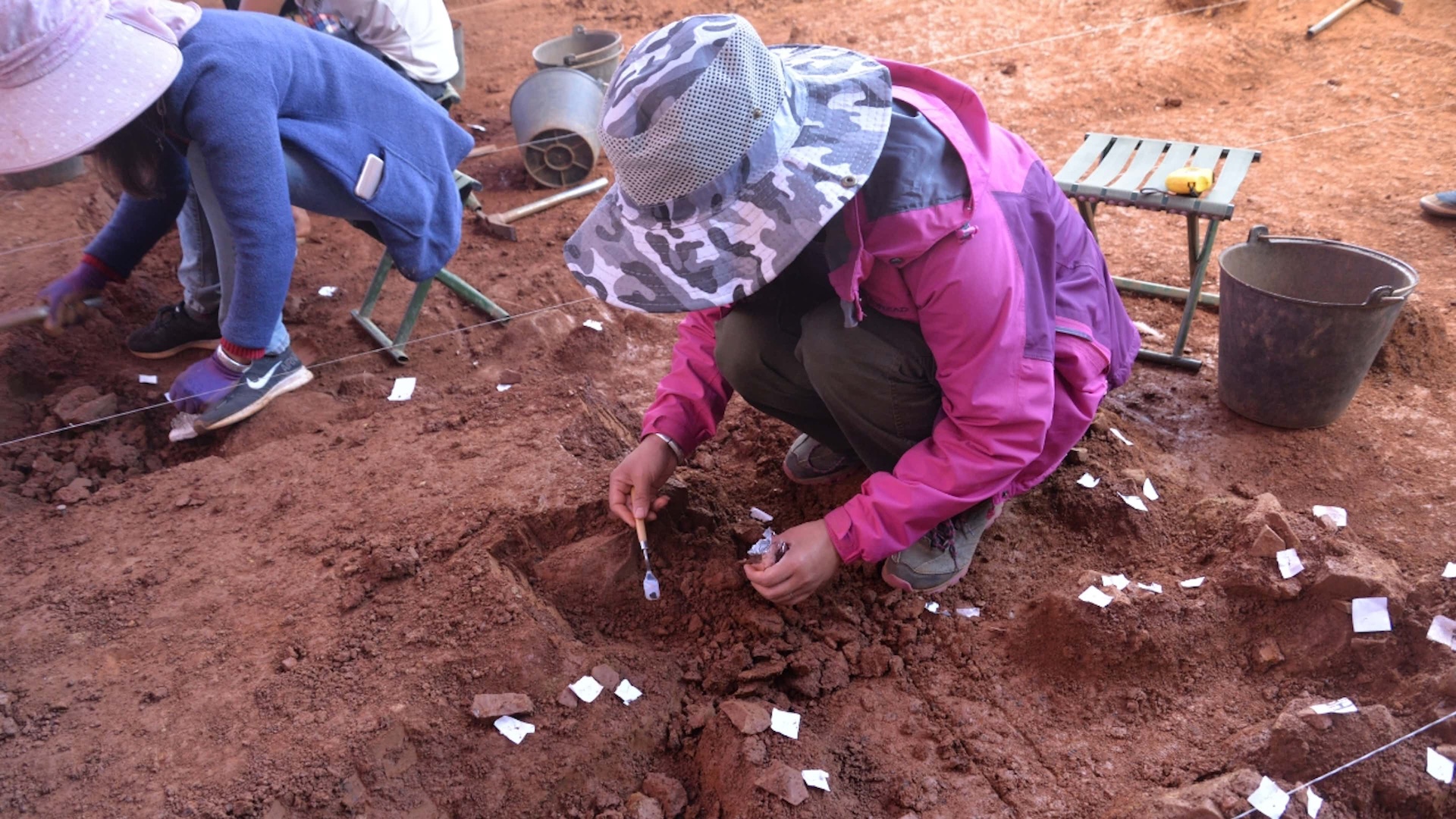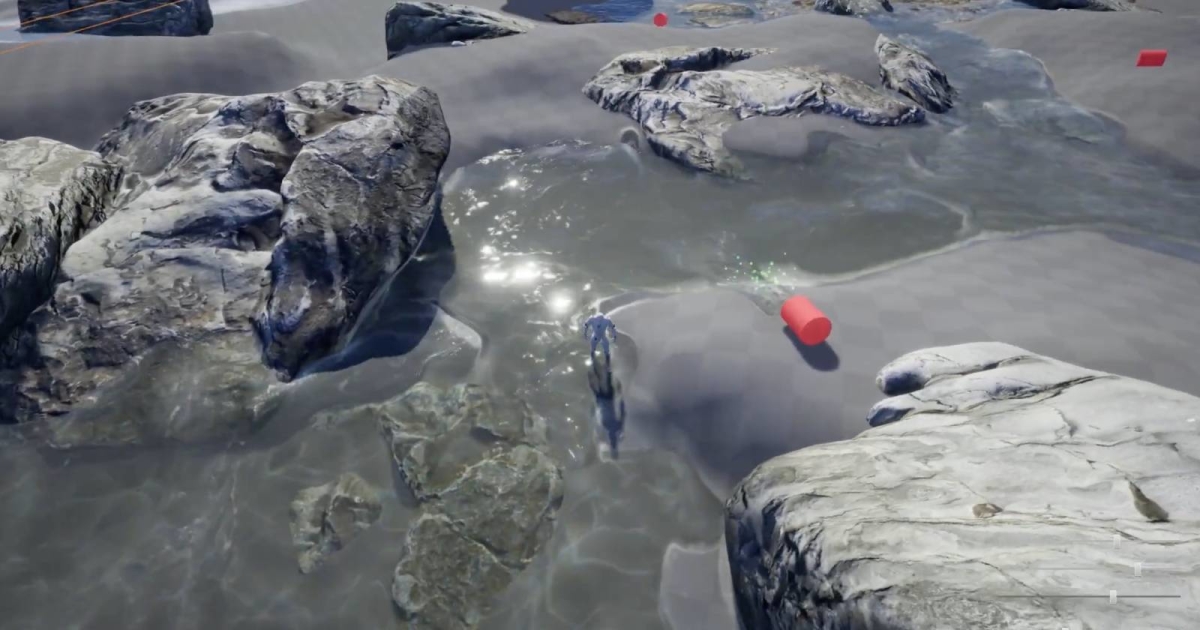0 Commenti
0 condivisioni
87 Views

Elenco
Elenco
-
Effettua l'accesso per mettere mi piace, condividere e commentare!
-
 WWW.POPSCI.COMToxic dust on Mars could make astronauts sickMars isn't just covered in rocksit also is blanketed by extremely fine Martian dust. Credit: NASA / JPL-Caltech / ASU / MSSSA unique set of risks and challenges await the first astronauts on Mars. Deadly solar radiation, nighttime temperatures regularly dropping lower than -100 degrees Fahrenheit, and an unbreathable atmosphere are just a few of the hurdles that require addressing. But recent research suggests yet another worry: toxic Martian dust.Cameras aboard NASAs Mars rovers like PerseveranceCuriosity have extensively documented the planets barren, rocky landscape over the years. However, the image resolution often fails to showcase the massive amounts of powdery dust that also blankets the terrain. These microscopic grainsknown as regolithare much more fine than the standard dust particles found on Earth. Not only that, but previous analysis shows that Martian regolith is more coarse than most Earth particulates. This combination makes it more abrasive and damaging if ingested or inhaled, much like asbestos.In a study published in February in the journal GeoHealth, scientists reviewed existing geological surveys of Mars, while focusing on 10 documented materials already well-known for their health hazards. Naturally occurring chlorine-based chemicals known as perchlorates, for example, can damage thyroid glands and lead to aplastic anemia, in which bone marrow fails to produce new blood cells. Meanwhile, the abundant amounts of silica on Mars are more than enough to cause silicosis, an incurable respiratory disease previously common among stoneworkers. Additional regolith particles include iron oxides and gypsum, as well as trace toxic metals including arsenic, beryllium, cadmium, and chromium. These are collectively associated with a host of other problems such as gastrointestinal inflammation, cancer, and weakened immune systems.A spacesuit will protect astronauts during excursions into the hostile outside environment, but they can only do so much once they return to base. An average speck of Martian dust measures around 3 micrometers (about the size of a mold spore) and rarely exceeds 8 m (10 times smaller than a sugar grain). This makes it much more difficult to clean a spacesuit, much less keep it from piling up in living quarters or back inside a spacecraft.Exposure to martian dust may come from dermal exposure, ocular contact, ingestion, or inhalation through oral and nasal cavities, the study authors wrote.And once ingested, much of that Martian dust wont be going anywhere quickly.The majority of this dust will likely penetrate the physical innate immune defenses of the respiratory tract as mucus in the lungs is not able to expel dust particles that have a diameter of less than 5 m, they explained. Thus, dust on Mars is more likely to cause lung irritation, absorb into the bloodstream, and lead to diseases in astronauts. While some of the predicted effects may remain asymptomatic, many others could become life-threatening. Get the Popular Science newsletter Breakthroughs, discoveries, and DIY tips sent every weekday. By signing up you agree to our Terms of Service and Privacy Policy.The makeup of Martian regolith isnt necessarily a dealbreaker for astronauts, however. Speaking with CNN, study co-author and University of Southern California medical student Justin Wang stated his belief that these are solvable problems.While the dust on Mars isnt going to be the most dangerous part of a mission to the Red Planet, its definitely a hazard that can be harmful to astronauts, yet easily avoidable given were properly prepared for it, Wang said.Wang and colleagues suggest that exposure mitigation be prioritized in mission planning, along with the inclusion of supplements to prevent diseases and sufficient treatment regimens for worst-case scenarios. After all, the nearest hospital will likely be around 140 million miles away.0 Commenti 0 condivisioni 89 Views
WWW.POPSCI.COMToxic dust on Mars could make astronauts sickMars isn't just covered in rocksit also is blanketed by extremely fine Martian dust. Credit: NASA / JPL-Caltech / ASU / MSSSA unique set of risks and challenges await the first astronauts on Mars. Deadly solar radiation, nighttime temperatures regularly dropping lower than -100 degrees Fahrenheit, and an unbreathable atmosphere are just a few of the hurdles that require addressing. But recent research suggests yet another worry: toxic Martian dust.Cameras aboard NASAs Mars rovers like PerseveranceCuriosity have extensively documented the planets barren, rocky landscape over the years. However, the image resolution often fails to showcase the massive amounts of powdery dust that also blankets the terrain. These microscopic grainsknown as regolithare much more fine than the standard dust particles found on Earth. Not only that, but previous analysis shows that Martian regolith is more coarse than most Earth particulates. This combination makes it more abrasive and damaging if ingested or inhaled, much like asbestos.In a study published in February in the journal GeoHealth, scientists reviewed existing geological surveys of Mars, while focusing on 10 documented materials already well-known for their health hazards. Naturally occurring chlorine-based chemicals known as perchlorates, for example, can damage thyroid glands and lead to aplastic anemia, in which bone marrow fails to produce new blood cells. Meanwhile, the abundant amounts of silica on Mars are more than enough to cause silicosis, an incurable respiratory disease previously common among stoneworkers. Additional regolith particles include iron oxides and gypsum, as well as trace toxic metals including arsenic, beryllium, cadmium, and chromium. These are collectively associated with a host of other problems such as gastrointestinal inflammation, cancer, and weakened immune systems.A spacesuit will protect astronauts during excursions into the hostile outside environment, but they can only do so much once they return to base. An average speck of Martian dust measures around 3 micrometers (about the size of a mold spore) and rarely exceeds 8 m (10 times smaller than a sugar grain). This makes it much more difficult to clean a spacesuit, much less keep it from piling up in living quarters or back inside a spacecraft.Exposure to martian dust may come from dermal exposure, ocular contact, ingestion, or inhalation through oral and nasal cavities, the study authors wrote.And once ingested, much of that Martian dust wont be going anywhere quickly.The majority of this dust will likely penetrate the physical innate immune defenses of the respiratory tract as mucus in the lungs is not able to expel dust particles that have a diameter of less than 5 m, they explained. Thus, dust on Mars is more likely to cause lung irritation, absorb into the bloodstream, and lead to diseases in astronauts. While some of the predicted effects may remain asymptomatic, many others could become life-threatening. Get the Popular Science newsletter Breakthroughs, discoveries, and DIY tips sent every weekday. By signing up you agree to our Terms of Service and Privacy Policy.The makeup of Martian regolith isnt necessarily a dealbreaker for astronauts, however. Speaking with CNN, study co-author and University of Southern California medical student Justin Wang stated his belief that these are solvable problems.While the dust on Mars isnt going to be the most dangerous part of a mission to the Red Planet, its definitely a hazard that can be harmful to astronauts, yet easily avoidable given were properly prepared for it, Wang said.Wang and colleagues suggest that exposure mitigation be prioritized in mission planning, along with the inclusion of supplements to prevent diseases and sufficient treatment regimens for worst-case scenarios. After all, the nearest hospital will likely be around 140 million miles away.0 Commenti 0 condivisioni 89 Views -
 WWW.SCIENCENEWS.ORGNeandertal-like tools found in China present a mysterySkip to contentNewsArchaeologyNeandertal-like tools found in China present a mysteryA type of tool pioneered by European Neandertals may have traveled a continent away Multipurpose stone tools such as this one, found at a 60,000- to 50,000-year-old Chinese site, closely resemble implements made by European and western Asian Neandertals.Hao LiBy Bruce Bower1 hour agoStone tools traditionally attributed to European and western Asian Neandertals have turned up nearly a continent away in southern China.Artifacts unearthed at a river valley site called Longtan include distinctive stone cutting and scraping implements and the rocks from which these items were struck. Until now, such items have been linked only to geographically distant Neandertals, says a team led by archaeologists Qi-Jun Ruan and Hao Li of the Institute of Tibetan Plateau Research in Beijing.Sign up for our newsletterWe summarize science breakthroughs every Thursday.0 Commenti 0 condivisioni 98 Views
WWW.SCIENCENEWS.ORGNeandertal-like tools found in China present a mysterySkip to contentNewsArchaeologyNeandertal-like tools found in China present a mysteryA type of tool pioneered by European Neandertals may have traveled a continent away Multipurpose stone tools such as this one, found at a 60,000- to 50,000-year-old Chinese site, closely resemble implements made by European and western Asian Neandertals.Hao LiBy Bruce Bower1 hour agoStone tools traditionally attributed to European and western Asian Neandertals have turned up nearly a continent away in southern China.Artifacts unearthed at a river valley site called Longtan include distinctive stone cutting and scraping implements and the rocks from which these items were struck. Until now, such items have been linked only to geographically distant Neandertals, says a team led by archaeologists Qi-Jun Ruan and Hao Li of the Institute of Tibetan Plateau Research in Beijing.Sign up for our newsletterWe summarize science breakthroughs every Thursday.0 Commenti 0 condivisioni 98 Views -
 WWW.LIVESCIENCE.COMSee spectacular photos from Saturday's partial solar eclipseThe partial solar eclipse on March 29 wowed skywatchers in the Northern Hemisphere.0 Commenti 0 condivisioni 89 Views
WWW.LIVESCIENCE.COMSee spectacular photos from Saturday's partial solar eclipseThe partial solar eclipse on March 29 wowed skywatchers in the Northern Hemisphere.0 Commenti 0 condivisioni 89 Views -
 WWW.LIVESCIENCE.COMUnknown human species in East Asia used sophisticated tools at the same time Neanderthals did in EuropeA stone tool discovery in China rewrites the human story of Middle Paleolithic era in East Asia0 Commenti 0 condivisioni 105 Views
WWW.LIVESCIENCE.COMUnknown human species in East Asia used sophisticated tools at the same time Neanderthals did in EuropeA stone tool discovery in China rewrites the human story of Middle Paleolithic era in East Asia0 Commenti 0 condivisioni 105 Views -
 I.REDD.ITHow would I make a material like this?I'm trying to model something inspired by early 2000's transparent technology, and I was wondering how I would go about making a material that looks like colorful transparent plastic, and still shows what's inside. Sorry if this is super basic, or if this is the wrong subreddit to post this. submitted by /u/worldwidewizard404 [link] [comments]0 Commenti 0 condivisioni 86 Views
I.REDD.ITHow would I make a material like this?I'm trying to model something inspired by early 2000's transparent technology, and I was wondering how I would go about making a material that looks like colorful transparent plastic, and still shows what's inside. Sorry if this is super basic, or if this is the wrong subreddit to post this. submitted by /u/worldwidewizard404 [link] [comments]0 Commenti 0 condivisioni 86 Views -
X.COMRazvan Mindra shared how he created his fascinating Vampire Slaying Kit in ZBrush, Maya, Substance 3D Painter, and Marmoset Toolbag, explaining how to...Razvan Mindra shared how he created his fascinating Vampire Slaying Kit in ZBrush, Maya, Substance 3D Painter, and Marmoset Toolbag, explaining how to put a creepy pickled monster in a jar and make props look aged.Read: https://80.lv/articles/how-to-build-vampire-slaying-kit-in-3d/0 Commenti 0 condivisioni 104 Views
-
X.COMAsh Thundercliffe presented a detailed breakdown of the Tudor House Amongst the Clouds project, sharing the techniques for making wooden and brick mat...Ash Thundercliffe presented a detailed breakdown of the Tudor House Amongst the Clouds project, sharing the techniques for making wooden and brick materials look natural and realistic by adding depth.Read the interview: https://80.lv/articles/how-to-create-a-realistic-tudor-house-on-a-floating-island/0 Commenti 0 condivisioni 105 Views
-
 CGSHARES.COMCheck Out Water Filling Gaps In NinjaLIVE 2.0 Pre-Alpha For UE5In December, Andras Ketzer began working on FluidNinja LIVE 2.0, a new version of his real-time fluid simulation tool for Unreal Engine 5. Currently in pre-alpha and not yet available to the public, the tool is expected to enter a closed alpha phase in Q1-Q2 2025, followed by a public beta later on.Since then, the developer has shared a few videos, with the latest one highlighting a significant milestone: the introduction of mass and elevation averaging. If you watch the demo until the middle, youll notice how the rocky elevation becomes smoother as the water floods the creek bed. This demo simulates a 100m area at 2K resolution, achieving 260 FPS on NVIDIAs GeForce RTX 3080.FluidNinja LIVE 2.0 alpha will be available to a select group of users chosen for testing. The beta will be open to all indie users with an existing license, while large corporations will need to purchase a tier-2 FAB license. It will not be available for Student Version users.Overall, FluidNinja LIVE 2.0 will upgrade the 1.x version, maintaining backward compatibility and ensuring that current 1.x setups can transfer to 2.x. The entire system has been reworked in Niagara, and to reach a production-ready state, it will undergo extensive testing throughout 2025.Please note that FluidNinja LIVE 2.0 beta will be distributed via the dedicated Discord server, which you can join to stay updated on all the latest news and developments.Also,join our80 Level Talent platformand ournew Discord server, follow us onInstagram,Twitter,LinkedIn,Telegram,TikTok, andThreads, where we share breakdowns, the latest news, awesome artworks, and more.Source link The post Check Out Water Filling Gaps In NinjaLIVE 2.0 Pre-Alpha For UE5 appeared first on CG SHARES.0 Commenti 0 condivisioni 98 Views
CGSHARES.COMCheck Out Water Filling Gaps In NinjaLIVE 2.0 Pre-Alpha For UE5In December, Andras Ketzer began working on FluidNinja LIVE 2.0, a new version of his real-time fluid simulation tool for Unreal Engine 5. Currently in pre-alpha and not yet available to the public, the tool is expected to enter a closed alpha phase in Q1-Q2 2025, followed by a public beta later on.Since then, the developer has shared a few videos, with the latest one highlighting a significant milestone: the introduction of mass and elevation averaging. If you watch the demo until the middle, youll notice how the rocky elevation becomes smoother as the water floods the creek bed. This demo simulates a 100m area at 2K resolution, achieving 260 FPS on NVIDIAs GeForce RTX 3080.FluidNinja LIVE 2.0 alpha will be available to a select group of users chosen for testing. The beta will be open to all indie users with an existing license, while large corporations will need to purchase a tier-2 FAB license. It will not be available for Student Version users.Overall, FluidNinja LIVE 2.0 will upgrade the 1.x version, maintaining backward compatibility and ensuring that current 1.x setups can transfer to 2.x. The entire system has been reworked in Niagara, and to reach a production-ready state, it will undergo extensive testing throughout 2025.Please note that FluidNinja LIVE 2.0 beta will be distributed via the dedicated Discord server, which you can join to stay updated on all the latest news and developments.Also,join our80 Level Talent platformand ournew Discord server, follow us onInstagram,Twitter,LinkedIn,Telegram,TikTok, andThreads, where we share breakdowns, the latest news, awesome artworks, and more.Source link The post Check Out Water Filling Gaps In NinjaLIVE 2.0 Pre-Alpha For UE5 appeared first on CG SHARES.0 Commenti 0 condivisioni 98 Views -






